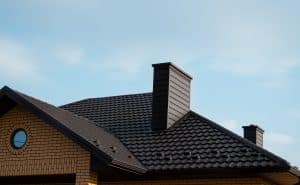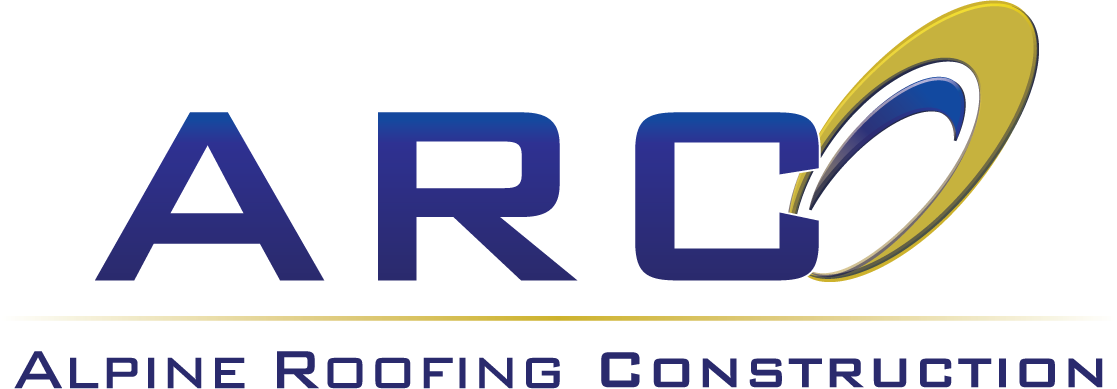
Whether you’re installing a roof on a new home or it’s time to replace your existing roof, it’s important to understand the benefits and drawbacks of various roofing materials. While there’s a wide variety of options on the market, not all of them offer substantial durability and longevity — two roofing traits every homeowner should look for.
Metal roofing, with its sleek, uncomplicated aesthetic, has recently surged in popularity — not only due to its appearance but also for a variety of other reasons. Curious what you can expect when you opt for a metal roof installation? The experts at Alpine Roofing and Construction outline the pros and cons of this popular material below.
Metal Roofing Pros
Durability and Longevity
Of all roofing materials on the market, metal wins out in the categories of durability and longevity. With a quality installation, you can expect a metal roof to last at least 40 to 70 years. However, many homeowners find that metal roofing lasts even longer than its projected lifespan.
As far as longevity goes, most metal roofing materials come with a 30- to 50-year manufacturer warranty and, depending on the installation company, you’ll also get a workmanship warranty. In terms of durability, metal outperforms most other roofing materials because it’s designed to withstand multiple types of environmental impacts, including:
- Wind. Most metal roofing materials are rated to withstand wind gusts of up to 140 mph. In our windy Texas climate, metal is the optimal choice for maintaining the integrity of your roof even during severe weather.
- Fire. Metal is naturally fire resistant and, depending on the product, may also feature a special coating to further reduce the risk of fire damage.
- Rot. Unlike many other roofing materials, metal is not susceptible to developing rot after prolonged moisture exposure.
- Corrosion. Most metal roofing materials feature special coatings designed to minimize or even eliminate the risk of corrosion and rust.
- Chipping and cracking. Metal roofing will not chip or crack with prolonged environmental exposure. As such, it reduces the need for ongoing roof maintenance and repairs.
Design Versatility
For decades, metal roofing was typically found atop commercial buildings. Today, however, that’s no longer the case. According to industry data, metal roofing is now the second-most-popular residential roofing material, topped only by asphalt shingles.
Homeowners throughout Texas and beyond are increasingly gravitating toward metal roofs, not only for their durability but also for their visual appeal and design versatility. Because modern metal roofing materials are available in a wide variety of colors, finishes, and shapes, they’re able to complement any architectural design and exterior aesthetic.
Improved Household Energy Efficiency
Metal is naturally more reflective than any other roofing material, which makes it a great choice for those looking to reduce their household energy consumption. Due to its natural reflective qualities, a metal roof features considerable heat emissivity, meaning it reflects rather than absorbs the sun’s ultraviolet rays. As a result, homeowners can reduce their annual cooling costs by up to 25%. Many types of metal also feature specialty coatings to further increase their heat-reflective properties.
Reduced Environmental Impact
Not only does the metal manufacturing process have a smaller environmental footprint than that of other roofing materials, but metal is also fully recyclable. If you’re looking for high-quality building materials but are keen on reducing your carbon footprint, metal roofing is an excellent choice.
Metal Roofing Cons
Greater Initial Investment
Because metal boasts greater durability and longevity than the vast majority of other roofing materials, it’s one of the most expensive types of roofing on the market. Depending on the type and quality of the metal, you can expect to pay anywhere from $120 to $900 per square of material.
Keep in mind, though, that while your upfront investment might be greater, a metal roof will outlast virtually all other types of roofs. When you consider the fact that you’ll likely need to replace most other roofing materials within 15 to 30 years, the additional investment is well worth the expense.
Installation Expertise and Time
A high-quality metal roof installation requires special equipment, techniques, precision, training, and expertise. As such, installing a metal roof may require more time than the installation of other types of roofing. Labor costs for installing this type of roof are also higher than those for most other roofing materials.
Susceptibility to Denting
Although metal roofing is highly durable and can withstand decades of environmental impacts, it’s not impervious to damage. Certain types of metal — typically those that land on the more affordable end of the spectrum — are more prone to denting from hail, tree branches, and other falling objects. Keep in mind, though, that metal, like any other roofing material, is available in a range of qualities and price points. Typically, the higher quality the material, the less prone it is to denting. If you’re thinking about installing a metal roof on your home, get in touch with our team at Alpine Roofing and Construction so we can advise you on your options! For over 25 years, we’ve proudly served both residential and commercial roofing clients throughout the Dallas–Fort Worth metro, and our number one goal is your complete satisfaction. To learn more or schedule an estimate, feel free to call our Dallas, TX, office at (214) 528-9897, or send us a message. We’ll be in touch.
